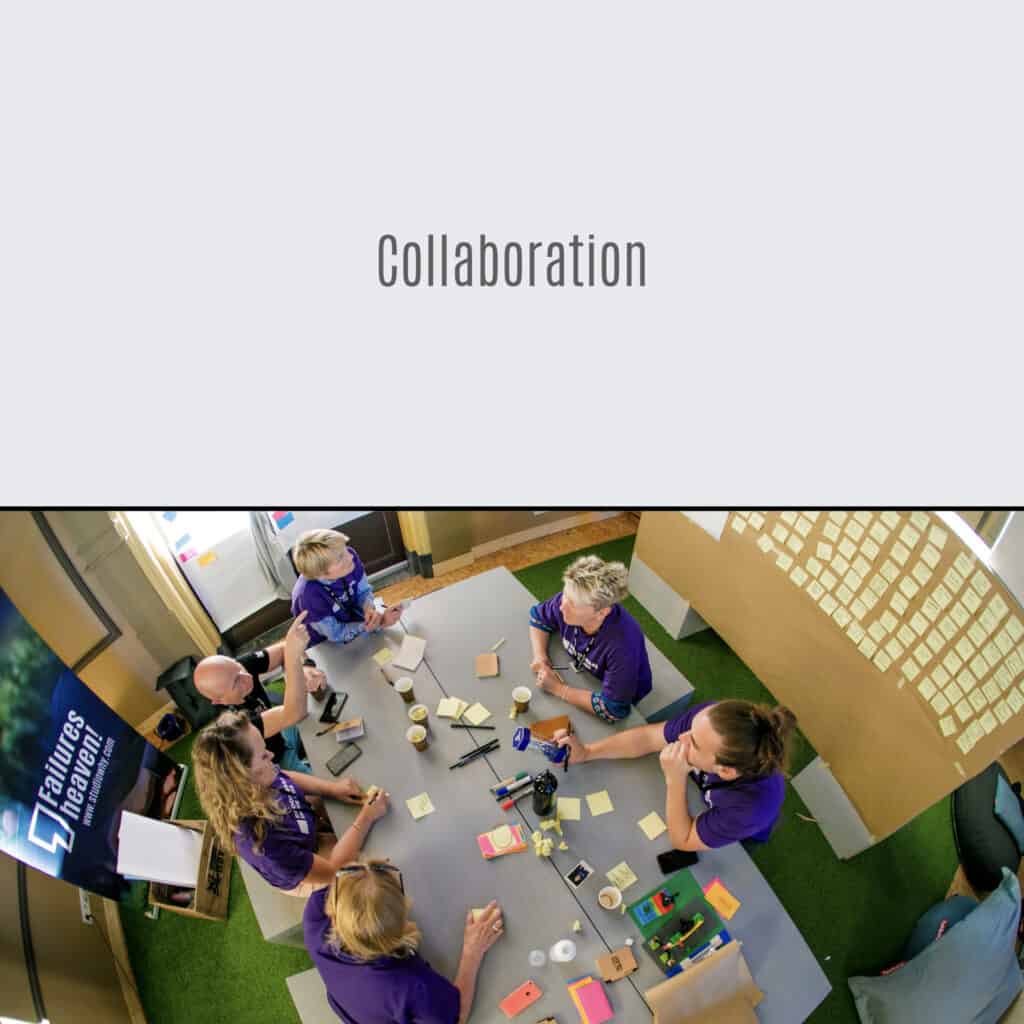By creating a culture of collaboration, organizations can foster a more innovative and productive work environment.

By creating a culture of collaboration, organizations can foster a more innovative and productive work environment.
Do you want to boost innovation and drive success through more team members sharing ideas and working together?
Are you curious how cross-functional collaboration can be a powerful tool for driving innovation within an organization?
Than you will love this post!
A culture of collaboration refers to the values, behaviors, and practices that support and encourage collaboration within an organization. A culture of collaboration promotes teamwork and open communication, and fosters a sense of shared purpose and collective responsibility among team members.
Creating a culture of collaboration requires active effort and leadership. Some steps that organizations can take to promote a culture of collaboration include:
By creating a culture of collaboration, organizations can foster a more innovative and productive work environment
Collaboration is a key factor in boosting innovation. When individuals or groups work together and share ideas, they can come up with creative solutions that they may not have thought of on their own. Collaboration allows people to share their diverse perspectives and expertise, which can lead to more comprehensive and effective solutions.
There are a few ways to foster collaboration and boost innovation within a team or organization:
By fostering a culture of collaboration and encouraging team members to share ideas and work together, organizations can boost innovation and drive success.
Cross-functional collaboration refers to the practice of bringing together individuals from different departments or functions within an organization to work together on a project or solve a problem. This type of collaboration can be particularly useful for driving innovation, as it allows team members with different skills, expertise, and perspectives to come together and share ideas.
There are several benefits to cross-functional collaboration for driving innovation:
Overall, cross-functional collaboration can be a powerful tool for driving innovation within an organization. By bringing together individuals with diverse skills and perspectives, organizations can come up with creative and effective solutions to challenges and drive progress.
Like we explained above, cross-functional collaboration refers to the practice of bringing together individuals from different departments or functions within an organization to work together on a project or solve a problem. This type of collaboration allows team members with different skills, expertise, and perspectives to come together and share ideas, leading to more comprehensive and effective solutions.
On the other hand, multidisciplinary collaboration refers to the practice of bringing together individuals from different disciplines or fields of study to work on a project or solve a problem. This type of collaboration allows team members with different areas of expertise and knowledge to come together and share ideas, leading to more comprehensive and effective solutions.
Both cross-functional collaboration and multidisciplinary collaboration can be useful for driving innovation, as they allow team members to draw on a wide range of expertise and knowledge when working on a problem or project. However, cross-functional collaboration typically takes place within a single organization, while multidisciplinary collaboration can involve individuals from different organizations or institutions.
There are several steps that organizations and teams can take to improve collaboration and make it more effective:
By taking these steps, organizations and teams can foster a more collaborative and effective work environment.
Would you like to improve collaboration, but are you not sure how best to approach this? STUDIO.WHY is happy to help realize good cooperation in the workplace. Please feel free to contact us so that we can discuss the possibilities. Curious how we approach this? Then take part in our free webinars, free email course or training courses.
Subscribe to our 3-weekly newsletter: The Innovators Journey to get valuable insights, tips, resources and special offers to drive change.
We are dedicated to helping individuals and organizations unlock their innovation potential. Our team offers a range of services including webinars, workshops, tailored programs, coaching, and training that can be tailored to fit your specific needs and goals. Whether you are a large group or an individual seeking one-on-one support, we have options to accommodate you. Contact us today to discover how we can help drive innovation and success within your organization.
Education
Public Service
Healthcare
Infra & Mobility
Tech & ICT
Food & Pleasure
Finance
STUDIO.WHY
Genteldijk 5
4191 LD Geldermalsen
The Netherlands
We set the language based on your browser settings. If you would like to visit the site in another language you are most welcome to select that here!